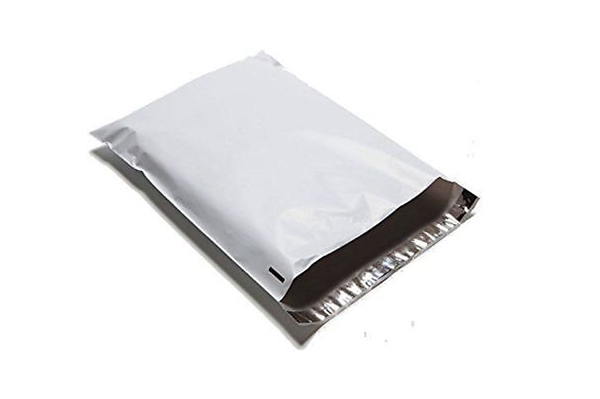Envelope packaging is a widely used form of protective and functional packaging designed to encase products in a convenient, secure, and cost-effective manner. Known for its lightweight design and versatility, envelope packaging has become a popular choice across various industries, from e-commerce to food delivery. This article will explore envelope packaging, its types, advantages, and specific uses, with a special focus on plastic envelope packaging, which has seen increasing demand in recent years.
Understanding Envelope Packaging
At its core, envelope packaging refers to a type of packaging designed to hold and protect products, usually flat items, within a simple, envelope-like structure. It is often used to ship items that do not require rigid protection, such as documents, apparel, or small electronics. The design of envelope packaging typically involves a flexible, flat, and sealed container with a flap that closes securely, offering easy access to the contents.
Envelope packaging is designed to minimize weight and maximize space efficiency, making it ideal for shipping products that are not fragile but still need to be protected from dust, dirt, and minor moisture. It is available in various materials, including paper, cardboard, and plastic.

Types of Envelope Packaging
- Paper Envelope Packaging
- Material: Typically made from kraft paper or a similar sturdy paper.
- Uses: Often used for mailing documents, books, or other lightweight materials.
- Advantages: Biodegradable, cost-effective, and available in various sizes.
- Plastic Envelope Packaging
- Material: Made from flexible plastic materials such as polyethylene or polypropylene.
- Uses: Commonly used for clothing, brochures, catalogs, and e-commerce orders.
- Advantages: Waterproof, durable, and resistant to wear and tear.
- Bubble Envelope Packaging
- Material: Includes an interior layer of bubble wrap within the envelope to cushion fragile items.
- Uses: Used for shipping items like electronics, jewelry, or other breakable goods.
- Advantages: Offers additional protection against impacts while maintaining the envelope’s lightweight form.
What is Plastic Envelope Packaging?
Plastic envelope packaging is a type of envelope packaging made primarily from various forms of plastic materials. It is highly popular due to its flexibility, durability, and resistance to environmental factors such as moisture and dirt. Plastic envelope packaging can be made in a variety of forms, including transparent, opaque, and colored options, and it is used in a wide array of industries, particularly in e-commerce.
Polyethylene, polypropylene, and other synthetic polymers are common plastic materials used in this type of packaging. These materials offer a high degree of durability and flexibility, allowing for efficient storage and transport of goods.
Advantages of Plastic Envelope Packaging
- Water and Moisture Resistance
One of the main benefits of plastic envelope packaging is its ability to protect products from moisture and water damage. This is particularly important when shipping products that might be exposed to rainy weather or environmental conditions during transit. - Durability
Plastic envelopes are more resistant to tearing and punctures compared to paper envelopes. This makes them ideal for shipping a wide range of products without the risk of breakage or leakage. - Lightweight and Cost-Effective
Plastic envelope packaging is lightweight, which helps reduce shipping costs. Its thin and flexible nature also allows for compact packaging, reducing storage and transportation expenses. - Customizable Design
Plastic envelopes can be easily customized with branding, logos, and vibrant colors. This makes them an attractive choice for businesses looking to add a professional touch to their packaging and marketing materials. - Reusability
Unlike paper-based envelopes, plastic envelopes can often be reused multiple times, providing an eco-friendly alternative for businesses focused on sustainability.
Common Uses of Plastic Envelope Packaging
- E-Commerce
Plastic envelope packaging is commonly used by online retailers to ship clothing, accessories, and other non-fragile items. It provides a secure, lightweight, and cost-efficient way to deliver products to customers. - Mailing Documents
Many businesses use plastic envelope packaging to mail important documents such as contracts, invoices, and brochures. The waterproof and durable nature of plastic ensures that the contents remain protected during transit. - Catalogs and Magazines
Publishers and marketers use plastic envelopes to mail catalogs and magazines to subscribers, offering protection against rain or other weather conditions. - Food Industry
In some cases, plastic envelope packaging is used to protect non-perishable food items, such as packaged snacks or dried products, from contaminants and moisture.
Sustainability Considerations
While plastic envelope packaging offers several practical advantages, there are concerns related to environmental impact. Plastic packaging can contribute to pollution if not disposed of properly. However, many manufacturers are responding to these concerns by producing biodegradable plastic options or encouraging customers to recycle the packaging after use.
Some brands are opting for recyclable plastics such as polyethylene, which can be repurposed into new products. Additionally, there is a growing trend in the packaging industry toward using recycled plastic materials in production, reducing the overall environmental footprint.
Conclusion
Envelope packaging, especially plastic envelope packaging, is an essential tool for businesses in various industries, from e-commerce to publishing. Its versatility, durability, and cost-effectiveness make it a reliable choice for shipping a wide range of products. The waterproof and lightweight nature of plastic ensures that items are delivered safely and in good condition, while customization options allow brands to add a personal touch to their packaging.
As the demand for sustainable packaging grows, the development of eco-friendly plastic options and recycling initiatives will continue to shape the future of envelope packaging. Whether you are shipping clothing, documents, or promotional materials, plastic envelope packaging is likely to remain an indispensable solution in the world of logistics and business.
Post time: 12-27-2024

